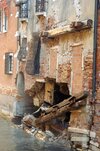- Joined
- 17 May 2012
- Messages
- 11,233
- Reaction score
- 961
- Country

Maybe the water is evaporating on the external surface due to air flow, sunshine etc?Surely a brick wall right next to a water source should have damp rising up it?
Are you suggesting that none of that water can penetrate those walls?

